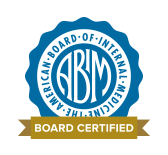Diddling with Diamox (acetazolamide): Mountains to Medicine

👁️ ➡️ 🧗♀️ ➡️ 🧠➡️ 🩸
Let’s talk about a drug you see prescribed for use in a few different scenarios: acetazolamide.

Who made this and when?
• Robin & Clapp at American Cyanamid
• Attribution to them 1951
Why was it developed?
• To treat glaucoma
• First medically used in 1952
How does this drug treat glaucoma?
By lowering aqueous humor and osmolality in the eye ➡️ intraocular pressure decreases
Definitely gained success in 1970s and reportedly in 1960s after successful Himalayan mountaineering expedition in preventing high altitude sickness. (Sorry, I had difficulty finding the reference on the 1960s one)
There was success in its use in 1982 (published in old JAMA article) in a jaunt up Mt Rainier when the treatment group received the drug and had less mountain sickness.
Physiology and Basic Chemistry

At the core of acetazolamide's action lies the fundamental carbonic anhydrase equation:
➡️ Catalyzed by carbonic anhydrase
➡️ Crucial for acid-base homeostasis, particularly in managing CO₂ levels and maintaining pH balance across various body tissues.
Mechanism of Action
Acetazolamide functions as a potent carbonic anhydrase inhibitor, particularly affecting isoenzymes CA II and CA IV. (All my nephrologists, click that link)


This inhibition leads to:
Reduced bicarbonate reabsorption in proximal tubules
Increased bicarbonate excretion
Development of metabolic acidosis
Enhanced ventilatory drive through peripheral and central chemoreceptor stimulation 🫁
The Chronic Hypercapnia Conundrum

Using acetazolamide in chronic hypercapnia presents a fascinating paradox in clinical medicine.
Look, it might seem logical to use a respiratory stimulant in patients with elevated CO₂ levels, but beware that there are several sophisticated physiological principles arguing against this overrated approach:
☝️ Metabolic Compensation Disruption:
Acetazolamide disrupts this delicate balance by inducing metabolic acidosis, potentially destabilizing long-standing compensatory mechanisms.
✌️Tissue Adaptation:
Chronic hypercapnia leads to cellular adaptations in CO₂ handling and pH regulation. Rapidly altering blood gases can alter these tightly adapted processes.
☝️ ✌️Energy Expenditure Impact:
This can potentially lead to fatigue in patients with already compromised respiratory function.
Your 3am Case 🕵️♂️
A 67-year-old male with severe COPD (FEV1 30% predicted) and chronic hypercapnia (baseline PaCO₂ 55 mmHg) was prescribed acetazolamide 250mg twice daily by his primary care physician in an attempt to improve his hypercapnia.
Within 48 hours, he developed worsening dyspnea and anxiety. Blood gases revealed:
- pH: 7.28 (decreased from baseline 7.36)
- PaCO₂: 58 mmHg
- HCO₃: 22 mEq/L (decreased from baseline 28)
Doctor’s Order
: Even 2 days of acetazolamide can cause metabolic acidosis in chronic hypercapnia
: 🚨Exercise caution in chronic hypercapnia
: 🚫🤰🚫 Avoid in pregnancy
: (Notice I did not include acetazolamide’s role as a diuretic in heart failure.)
Name 5 indications for acetazolamide
- 👁️ Glaucoma management
- 🧗♀️ Acute mountain sickness prevention
- 🧠 Idiopathic intracranial hypertension
- 🩸 Select cases of metabolic alkalosis
- 💧Edema volume overload
Let me know below in comments if you want more posts like this!
References 📚
- Roblin RO Jr, Clapp JW. The preparation of heterocyclic sulfonamides. J Am Chem Soc. 1950;72:4890-4892.
- Houston CS, Dickinson J. Effectiveness of Diamox in reducing acute mountain sickness. N Engl J Med. 1975;293:314-317.
- Supuran CT. Structure and function of carbonic anhydrases. Biochem J. 2016;473(14):2023-2032.
- Maren TH. Carbonic anhydrase: chemistry, physiology, and inhibition. Physiol Rev. 1967;47(4):595-781.
- Swenson ER. Carbonic anhydrase inhibitors and ventilation: a complex interplay of stimulation and suppression. Eur Respir J. 1998;12(6):1242-1247.
- Escalante CP, et al. Acetazolamide for the prevention and treatment of acute mountain sickness. Cochrane Database Syst Rev. 2012;(1):CD009761.
- Leaf DE, Goldfarb DS. Mechanisms of action of acetazolamide in the prophylaxis and treatment of acute mountain sickness. J Appl Physiol. 2007;102(4):1313-1322.
- Jones PW, et al. The role of carbonic anhydrase inhibition in the treatment of hypercapnic respiratory failure. Thorax. 1990;45(3):233-236.
- Mokhlesi B, Tulaimat A. Recent advances in obesity hypoventilation syndrome. Chest. 2007;132(4):1322-1336.
- Luks AM, McIntosh SE, Grissom CK, et al, “Wilderness Medical Society Consensus Guidelines for the Prevention and Treatment of Acute Altitude Illness,” Wilderness Environ Med, 2010, 21(2):146-55. [PubMed 20591379]
- Hollenberg SM, Warner Stevenson L, Ahmad T, et al. 2019 ACC expert consensus decision pathway on risk assessment, management, and clinical trajectory of patients hospitalized with heart failure: a report of the American College of Cardiology Solution Set Oversight Committee. J Am Coll Cardiol. 2019;74(15):1966-2011. doi:10.1016/j.jacc.2019.08.001 [PubMed 31526538]
- Heidenreich PA, Bozkurt B, Aguilar D, et al. 2022 AHA/ACC/HFSA guideline for the management of heart failure: a report of the American College of Cardiology/American Heart Association Joint Committee on clinical practice guidelines. Circulation. 2022;145(18):e895-e1032. doi:10.1161/CIR.0000000000001063 [PubMed 35363499]
- Brater DC. Update in diuretic therapy: clinical pharmacology. Semin Nephrol. 2011;31(6):483-494. doi:10.1016/j.semnephrol.2011.09.003[PubMed 22099505]
- Brater DC. Causes and treatment of refractory edema in adults. Post TW, ed. UpToDate. Waltham, MA: UpToDate Inc. http://www.uptodate.com. Accessed December 4, 2023.
- Pokhrel PK, Loftus SA. Ocular emergencies. Am Fam Physician. 2007;76(6):829-836. [PubMed 17910297]
- Weizer JS. Angle-closure glaucoma. Post TW, ed. UpToDate. Waltham, MA: UpToDate Inc. http://www.uptodate.com. Accessed November 1, 2021.
- Hove MW, Friedman DI, Patel AD, Irrcher I, Wall M, McDermott MP; NORDIC Idiopathic Intracranial Hypertension study group. Safety and tolerability of acetazolamide in the idiopathic intracranial hypertension treatment trial. J Neuroophthalmol. 2016;36(1):13-19. doi:10.1097/WNO.0000000000000322 [PubMed 26587993]
- Wall M, McDermott MP, Kieburtz KD, et al; NORDIC Idiopathic Intracranial Hypertension Study Group Writing Committee. Effect of acetazolamide on visual function in patients with idiopathic intracranial hypertension and mild visual loss: the idiopathic intracranial hypertension treatment trial. JAMA. 2014;311(16):1641-1651. doi:10.1001/jama.2014.3312 [PubMed 24756514]
- Faisy C, Meziani F, Planquette B, et al. Effect of acetazolamide vs placebo on duration of invasive mechanical ventilation among patients with chronic obstructive pulmonary disease: a randomized clinical trial. JAMA. 2016;315(5):480-488. doi:10.1001/jama.2016.0019 [PubMed 26836730]
- Mazur JE, Devlin JW, Peters MJ, Jankowski MA, Iannuzzi MC, Zarowitz BJ. Single versus multiple doses of acetazolamide for metabolic alkalosis in critically ill medical patients: a randomized, double-blind trial. Crit Care Med. 1999;27(7):1257-1261. [PubMed 10446816]
- Mehta A, Emmett M. Treatment of metabolic alkalosis. Post TW, ed. UpToDate. Waltham, MA: UpToDate Inc. http://www.uptodate.com. Accessed June 14, 2021
- Rialp Cervera G, Raurich Puigdevall JM, Morán Chorro I, et al. Effects of early administration of acetazolamide on the duration of mechanical ventilation in patients with chronic obstructive pulmonary disease or obesity-hypoventilation syndrome with metabolic alkalosis. A randomized trial. Pulm Pharmacol Ther. 2017;44:30-37. doi:10.1016/j.pupt.2017.03.002 [PubMed 28286047]
- Perwez et al. Acetazolamide causes renal HCO3− wasting but inhibits ammoniagenesis and prevents the correction of metabolic acidosis by the kidney Published Online:14 AUG 2020https://doi.org/10.1152/ajprenal.00501.2019
- https://jamanetwork.com/journals/jama/article-abstract/375750



Member discussion